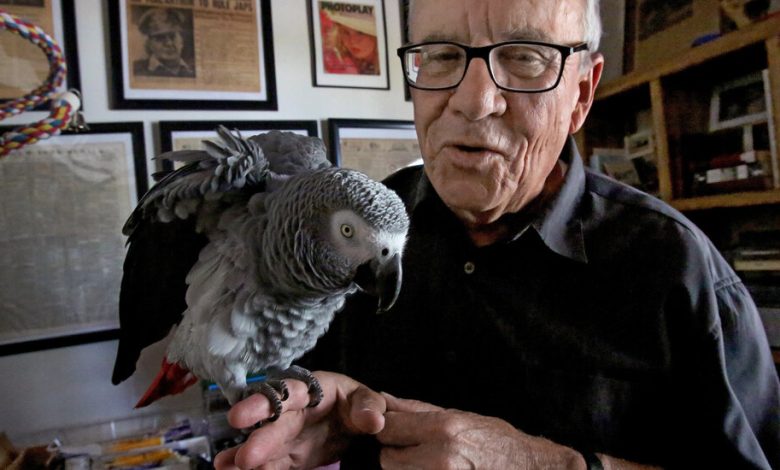Joe Sharkey, Travel Writer Who Survived Midair Collision, Dies at 77

Joe Sharkey, who delivered pragmatic advice to business travelers in hundreds of columns in The New York Times only to find himself at the focal point of a harrowing disaster in 2006, when the executive jet in which he was flying collided with a Boeing 737 over Brazil, died on Nov. 6 at his home in Tucson, Ariz. He was 77.
The cause was a hypertensive stroke, said his wife, Nancy Sharkey, a retired Times editor.
Mr. Sharkey was returning home from a freelance assignment for Business Jet Traveler magazine on Sept. 29, 2006, a Friday, when the jetliner clipped a wing and the tail of the Embraer Legacy 600 that was carrying him, four other passengers and a two-man crew at 37,000 feet over the Amazon rainforest.
The executive jet managed to land safely at a remote military airport, but the Gol Linhas Aéreas commercial airliner it collided with did not have such a fortunate fate: It nose-dived to the ground, killing all 154 people on board. It was the deadliest civilian aviation accident in Brazil at the time.
The collision prompted inquiries by Brazil’s military and by American transportation safety investigators. Both placed blame on air traffic controllers but never fully resolved who was at fault or why the planes were flying at the same altitude.
Mr. Sharkey had been writing the weekly “On the Road” column for The Times’s business-travel pages when he turned in a vivid first-person account of the collision. It vaulted him onto the front page the following Tuesday under the headline “Colliding With Death at 37,000 Feet, and Living.”
“Without warning, I felt a terrific jolt and heard a loud bang, followed by an eerie silence, save for the hum of the engines,” Mr. Sharkey wrote. “And then the three words I will never forget. ‘We’ve been hit,’ said Henry Yandle, a fellow passenger standing in the aisle near the cockpit of the Embraer Legacy 600 jet.”
He added: “The sky was clear; the sun low in the sky. The rainforest went on forever. But there, at the end of the wing, was a jagged ridge, perhaps a foot high, where the five-foot-tall winglet was supposed to be.
“And so began the most harrowing 30 minutes of my life,” he continued. “I would be told time and again in the next few days that nobody ever survives a midair collision. I was lucky to be alive.” Only later did he learn that everyone aboard the Boeing 737 had died.
“I thought of my family,” he wrote. “There was no point reaching for my cellphone to try a call — there was no signal. And as our hopes sank with the sun, some of us jotted notes to spouses and loved ones and placed them in our wallets, hoping the notes would later be found.”
His fellow passengers included executives from Embraer, the Brazilian manufacturer of the plane, as well as ExcelAire, the charter company that was ferrying the aircraft to its home base on Long Island.
Mr. Sharkey’s weekly columns, filled with personal insights, were popular for offering practical strategies to make business travel, by any means of transportation, more convenient.
He compared the advantages of taking Amtrak with those of booking short flights in the Northeast Corridor; reported that more budget-strapped companies were making employees share hotel rooms; wrote about efforts by cruise ship lines to woo business travelers; and gave tips on how to breeze through airport security.
“Even while Sharkey’s columns are more interested in the functional operations of air travel,” Christopher Schaberg wrote in “The Textual Life of Airports: Reading the Culture of Flight” (2012), “his recourse to literary form is telling: Sharkey casts the airport as a textual space, a performance site that demands to be interpreted.”
Joseph Michael Sharkey was born on Oct. 15, 1946, in Philadelphia. His mother, Marcella (Welch) Sharkey, was a supervisor for J.C. Penny. His father, Joseph C. Sharkey, was a shift supervisor for the Philadelphia Electric Company and a consultant to the company’s nuclear power plant.
Joe attended Pennsylvania State University, majoring in English. He was the first in his family to attend college, but, short of money, he didn’t graduate. Instead, he enlisted in the Navy. After appealing to the base chaplain during basic training for a transfer to a less perilous job than catching the tailhook of planes landing on an aircraft carrier, he was assigned as a journalist to the Navy News Service in Vietnam.
His marriage to Carolynne White ended in divorce in 1982. He married Nancy J. Albaugh in 1985. In addition to his wife, he is survived by his children from his first marriage, Dr. Caroline N. Sharkey, Lisa Stone and Christopher Sharkey; his siblings, Eileen O’Hara, Susan Palmer and Thomas, Edward and Michael Sharkey; five grandchildren; and two great-grandchildren.
Before joining The Times, Mr. Sharkey was a reporter and columnist for The Philadelphia Inquirer; the executive city editor of The Times-Union in Albany, N.Y.; and an assistant national editor of The Wall Street Journal.
He wrote a weekly “Jersey” column for three years for The Times before launching his business-travel column in 1999, which he wrote for 16 years until he retired in 2015. He continued to write a column online.
Mr. Sharkey was also the author of a novel and five nonfiction crime books, one of which, “Above Suspicion: An Undercover FBI Agent, an Illicit Affair, and a Murder of Passion” (1993), was adapted into a film released in 2021.



